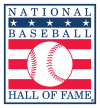With the process still tainted by the steroid era, David Ortiz was the lone player elected to the Baseball Hall of Fame this year, while others like Barry Bonds and Roger Clemens were shut out.
“Big Papi” was the only player to clear the required 75% threshold, according to results of this year’s voting by the Baseball Writers’ Association of America. Ortiz finished with 77.9% in becoming the 58th player elected in his first year of eligibility. At 46, he will also be the youngest of the 75 living members of the Hall.
“I learned not too long ago how difficult it is to get in on the first ballot,” Ortiz said. “Man, it’s a wonderful honor to be able to get in on my first rodeo. It’s something that is very special to me.”
Bonds, baseball’s all-time home run leader; 354-game winner Clemens; 600-homer-club member Sammy Sosa; and longtime ace pitcher Curt Schilling were in their 10th and final year of eligibility in the annual BBWAA balloting.
Bonds, Sosa and Clemens posted numbers that marked them as surefire, first-ballot Hall of Famers, but they became avatars for the era of performance-enhancing drugs. While Bonds and Clemens in particular have long denied using PEDs, accusations have dogged them in the media and in books, and have been the subject of court dramas and testimony in front of Congress. In the end, about a third of the voters decided the allegations were too egregious to overlook, enough to bar their entry to the hallowed halls of Cooperstown, at least via the writers’ vote.
Ortiz is a different story, despite his own PED suspicions. A 2009 story in The New York Times reported that Ortiz was among 104 players who tested positive for performance-enhancing substances during a round of tests conducted in 2003. Those results were supposed to remain confidential, and the tests were done to see if the league had reached a threshold to conduct regular testing.
Ortiz has long denied that he used banned substances, and in 2016, commissioner Rob Manfred said the tests in question were inconclusive because “it was hard to distinguish between certain substances that were legal, available over the counter and not banned under our program.”
Manfred added that during subsequent testing Ortiz “has never been a positive at any point under our program.”
When asked about those suspicions Tuesday, Ortiz said, “We had someone coming out with this one list, where you don’t know what anybody tested positive for. All of a sudden people are pointing fingers at me. But then we started being drug tested and I never tested positive. What does that tell you?”
As for the last-chance candidates, Sosa’s support never approached the threshold for election, but the cases of Bonds and Clemens were more divisive among the selectors. Both climbed over the 50% mark in 2017 only to see their support plateau in recent seasons. The tallies for their last go-arounds were 66% for Bonds and 65.2% for Clemens.
There’s a whole lot of discourse about this, and I’ll just link to a few articles so you can get a feel for it. I’m worn out just thinking about it. Ortiz joins six other former players who were elected via the Eras Committee process in December. And hey, guess what?
The hotly debated cases for Bonds, Clemens, Sosa and Schilling will move to a new arena: the Hall of Fame’s Today’s Game era committee. The era committees comprise players, executives and media members who are charged with evaluating overlooked candidates. The Today’s Game committee is next scheduled to convene during the 2022 winter meetings in December.
We get to live through the whole Bonds/Clemens/Sosa/Schilling debate again later this year, and again in 2024. Deep breaths, we’ll get through this together. Fangraphs, The Ringer, and Drew Magary, among many others, have more.

